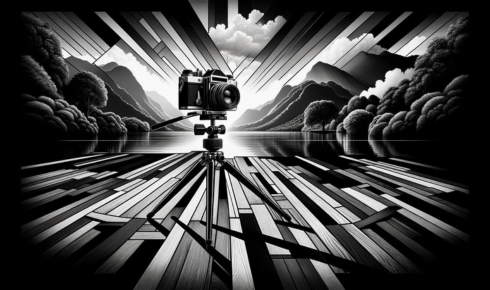Capturing More Than Just a Face: The Quiet Power of Good Photography

There’s a strange magic in the way a photograph lingers. Think about it—most of the pictures we scroll past in a day are forgettable, half-blurred snaps of food or shaky videos of pets. But every now and then, you stumble across an image that stops you. It holds weight. It carries a story, even if you don’t know the person in it. That’s the thing about good photography: it’s not just about seeing, it’s about feeling.
I’ve been on both sides of the lens—sometimes awkward in front of it, sometimes the one pressing the shutter. And if there’s one truth that’s clear, it’s that people don’t want stiff, polished versions of themselves anymore. They want realness. A photograph that looks like them, but maybe the version of themselves they’d like the world to meet first.
The Photographer’s Role Goes Beyond Clicking a Button
A good photo isn’t born out of fancy equipment alone. Sure, cameras and lenses help, but it’s the person behind the gear that matters. Their ability to notice details—a nervous hand gesture, a fleeting smirk, the way someone lights up mid-conversation. That’s what makes a portrait breathe.
Take the work of a Melbourne Photographer, for example. In a city known for its laneways, shifting light, and mix of architecture, the setting itself often becomes part of the story. But it’s the photographer who decides whether you look approachable, bold, playful, or strong. They don’t just document; they interpret.
Why Portraits Still Matter in an Over-Photographed World
You’d think with billions of selfies floating around the internet, portraits would lose their significance. But oddly enough, they’ve become more important. Because while quick snapshots are everywhere, intentional portraits feel rare—like slowing down in a fast world.
A well-done portrait makes people stop scrolling. It’s the image that ends up framed on a desk, printed in a program, or featured on a company’s “About Us” page. Unlike selfies, it doesn’t get lost in a camera roll of duplicates. It has presence.
Walking Into a Studio
Studios can feel intimidating at first. Bright lights, equipment you don’t recognize, and the quiet hum of anticipation. But step into a good photo portrait studio, and the vibe shifts. The space becomes less about technical gear and more about comfort. Music might be playing softly. The photographer cracks a joke, you laugh despite yourself, and before you know it, the camera feels less like a spotlight and more like a mirror reflecting your better side.
There’s something about being in a controlled space—where lighting, backdrop, and mood all align—that strips away distraction. You’re left with focus. And often, that’s where the most timeless portraits are created.
Beyond Business: The Personal Side of Portraits
For professionals, a polished headshot is often the goal. But portraits aren’t only for LinkedIn or press releases. Sometimes, they’re deeply personal. A milestone birthday. A couple wanting to capture their relationship in its everyday tenderness. Parents freezing the fleeting stage of a child’s life before it changes again.
These images might never appear on a business card or in a magazine, but they carry their own weight. They’re the ones passed down, shown decades later with the quiet pride of “this was us, back then.”
The Awkward Truth About Being Photographed
Here’s a confession: most people feel awkward in front of a camera. It’s universal. The stiff shoulders, the fake smiles, the “what do I do with my hands?” panic. But that’s where the real skill of a photographer comes in.
They’re not just shooting; they’re guiding. Sometimes with humor, sometimes with quiet reassurance, sometimes with nothing more than patience. A photographer knows when to wait out the nerves until the moment shifts and the subject relaxes into something authentic. That’s when the best shots happen—not in the first ten minutes, but when you’ve stopped trying to “pose” and started just being.
The Intersection of Art and Identity
Portrait photography sits at this fascinating intersection of art and identity. It’s not just a record of what someone looks like, but how they want to be seen. That’s why so many people invest in professional photos even in an era where we all carry cameras in our pockets.
It’s not vanity. It’s intentional storytelling. A portrait can say: this is me at this point in my life. This is how I want to be remembered.
Choosing the Right Photographer
Finding the right fit matters more than people think. Style, yes—but also personality. Some photographers thrive in outdoor, candid environments, capturing people mid-laughter under natural light. Others excel in precise, studio-lit setups that feel almost sculptural. Neither is better; it depends on what story you’re hoping to tell.
The real magic happens when you trust your photographer enough to let your guard down. When you stop worrying about looking “perfect” and start leaning into being yourself. That trust often shows up in the final image more than anything technical.
What a Photograph Leaves Behind
Long after the session is done, the final portrait carries weight. It will outlive the awkwardness you felt posing, the nervous laughter, the outfit you weren’t sure about. Years down the line, you won’t remember the details of the shoot, but you’ll have the photograph. A small piece of your story, frozen in light.
That’s the power of a portrait. Not vanity. Not ego. Just a snapshot of self, preserved.
Closing Thoughts
In the end, photography is less about the click of a camera and more about connection. A good portrait connects you to yourself, to the photographer, and eventually, to whoever views it. It’s a bridge.
So maybe the next time you hesitate at the thought of stepping into a studio or hiring a professional, remember: you’re not just paying for a picture. You’re investing in a piece of identity, something that speaks when you’re not in the room. And in a world crowded with fleeting images, that’s something worth holding onto.
